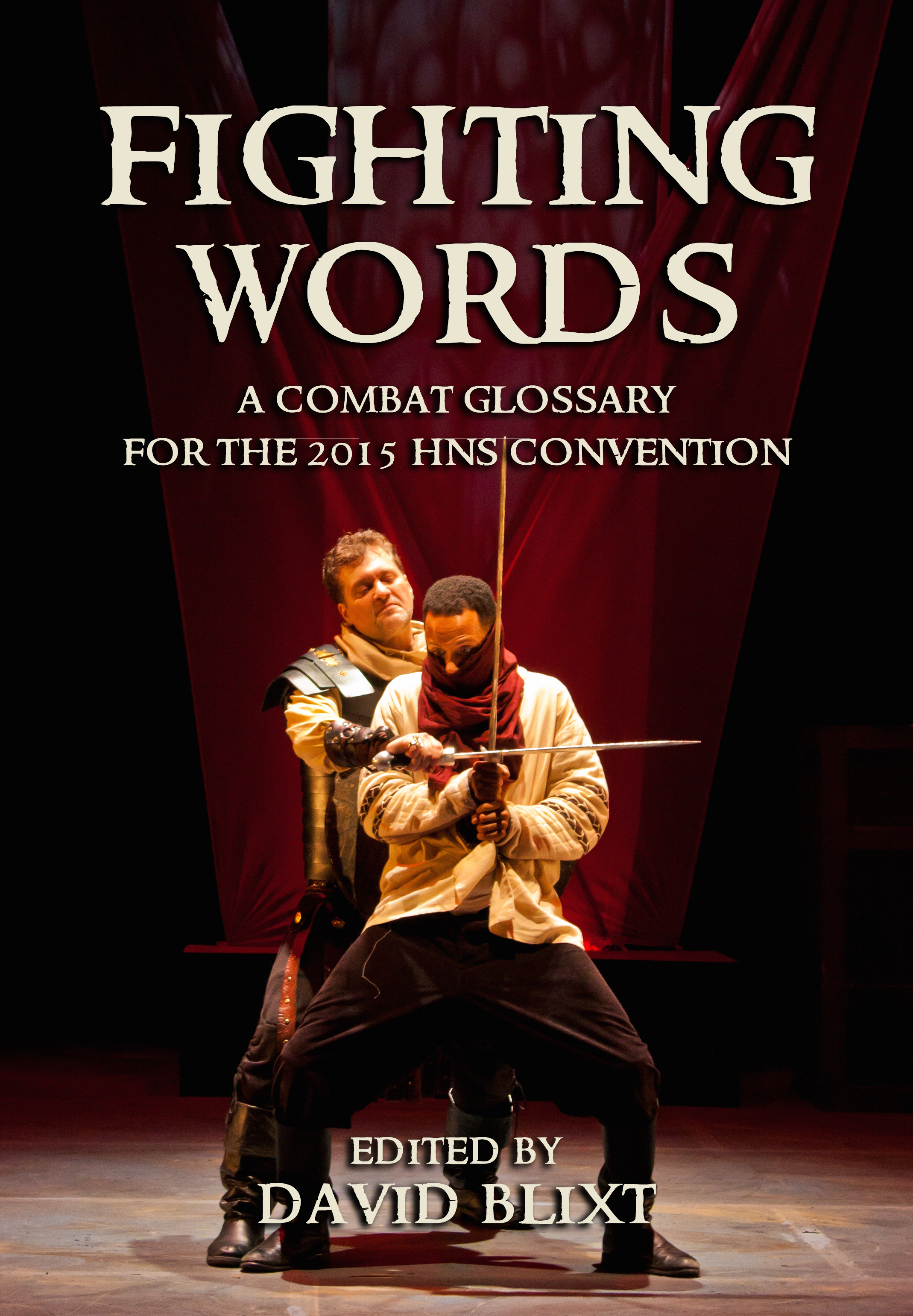The volume I put together for the HNS Conference in Denver this weekend has something that will hopefully make my fellow writer's hearts go pitter-pat. Not only is there a 150-page glossary. There are also biographies of all the major Fight Masters of the late Medieval, Renaissance, and Enlightenment periods, along with three pages of primary sources, listed chronologically.
Some of the biographies are lengthy, some brief, depending on the information I had at hand for each man. Here's an example of one of the longer entries:
Fabris, Salvator: (1544-1618) A celebrated Italian master of the late sixteenth and early seventeenth centuries whose work dealt entirely with the practical application of swordsmanship in the fencing school, the duel, and the brawl. Born in or around Padua, his youth coincided with the flowering of the Italian school of swordsmanship, with early Italian masters like Achille Marozzo, Angelo Viggiani and Giacomo di Grassi still teaching. He worked as a fencing master in Italy as well as in Northern Europe. After employment with an Archbishop, Salvator entered the service of the king of Denmark, Christian IV from 1601 to 1606. It was the King himself who sponsored the publication of the treatise, putting his court painter, Jan Halbeeck, as well as others like Valeggio (whose signature also appears in the book’s plates) at Fabris’ disposal to refine the drawings of the book’s handwritten edition. Fabris left the King’s employment in 1606, and after traveling across Europe, returned to Italy to teach at the University of Padua. His renown at its peak, young noblemen from all over Europe came to Padua to be taught by him. He died at the age of 74 after fighting against malignant fever. On his deathbed, he bestowed his salle to senior student Herman, a German, who was later assassinated by a jealous colleague by the name of Heinrich. The chief significance of Fabris’ treatise (1606) was the introduction and definition of the contra postura, as well as the definition and clarification of many previously half defined principles of fence, time, distance, circular parries and their deceptions, the disengagement, feints and opposition.
Have I whetted your appetites yet?
See you Friday!


